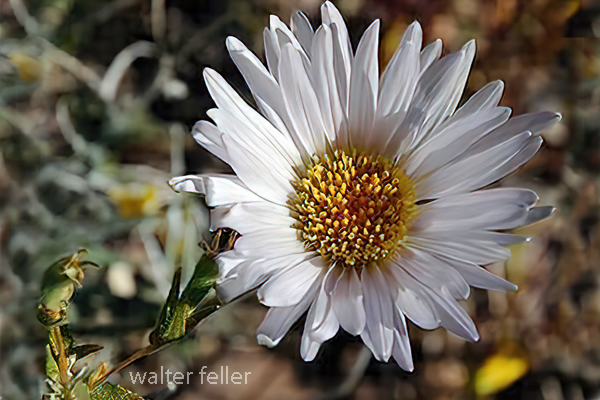Mojave Aster
Aster mohavensis (also known as Xylorhiza tortifolia)
Mojave Aster is one of the showiest wildflowers in the desert spring bloom. With its pale lavender petals and sunny yellow center, it brings soft color and a touch of elegance to rocky slopes and desert washes.
Appearance:
A woody, perennial wildflower that typically grows 1 to 3 feet tall. The leaves are gray-green, narrow, and often slightly twisted. The flower heads are daisy-like, with light purple to lavender petals surrounding a yellow disk. The plant can produce many flowers, making it a favorite in the wild and in native gardens.
Habitat:
Grows on rocky slopes, desert hillsides, and open flats—especially in well-drained, gravelly soils. Found in the Mojave and Sonoran Deserts, usually below 5,000 feet.
Bloom Time:
Blooms from March to June, and sometimes again in fall after rain.
Pollinators:
Attracts bees, butterflies, and other pollinators. Its large blooms and long flowering period make it a dependable source of nectar.
Note:
Mojave Aster is both tough and beautiful—capable of surviving extreme conditions while adding delicate color to the desert landscape. It's also popular in drought-tolerant gardens thanks to its long bloom time and easy care.
Found in creosote bush scrub and sandy desert wash habitats between 800 and 6500 feet
Blooms March to May & October.
40-60 ray petals, light blue to lavender to almost white. Yellow disk.